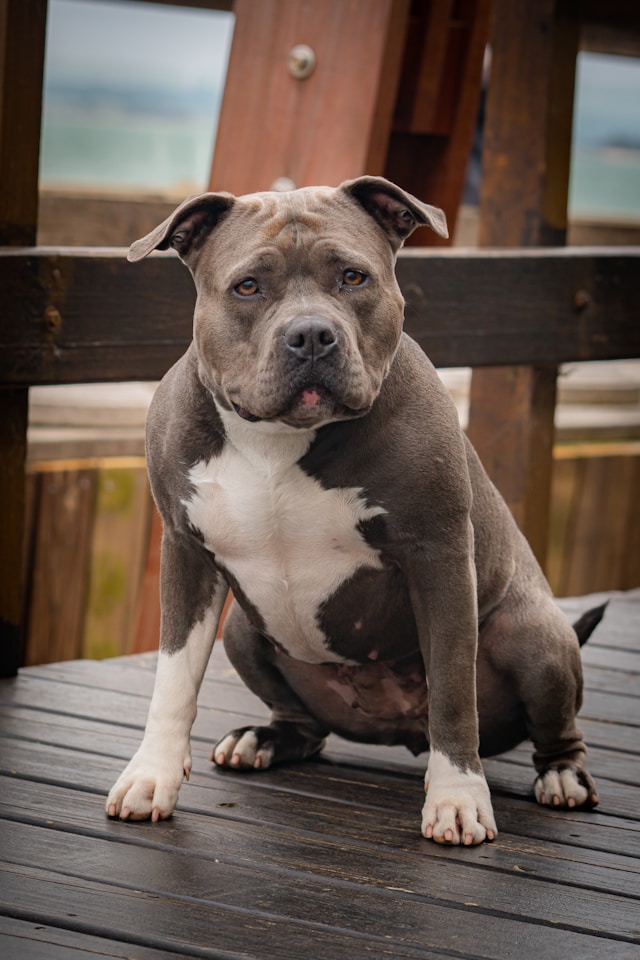If you’ve ever found yourself scratching your head trying to figure out whether that muscular, short-haired pup at the park is a Staffordshire Bull Terrier (Staffy) or a Pitbull, you’re not alone. These two breeds often get mixed up because of their similar looks and shared history. But trust me, there are some key differences once you know what to look for. In this article, we’re diving deep into the world of Staffies and Pitbulls to help you spot the distinctions. Whether you’re a potential owner, a curious bystander, or just want to impress your friends with your dog knowledge, understanding “Staffy how to tell a Staff from a Pitbull” is super important—especially since misidentification can lead to misunderstandings about behavior or even legal issues in some areas. So, let’s get started!
Understanding the Staffy Breed
First up, let’s talk about the Staffordshire Bull Terrier, or Staffy as they’re affectionately known. These dogs hail from England, specifically from the Staffordshire region (hence the name). Back in the 19th century, they were bred for bull-baiting—a brutal sport that’s thankfully long gone. When that was banned, they were used in dog fighting, but over time, breeders focused on their companion qualities, turning them into the lovable family dogs we know today. The Staffy was officially recognized by the Kennel Club in the UK in 1935, and their popularity has only grown since.

So, what’s a Staffy like? Picture a compact, muscular dog with a ton of energy packed into a small frame. They usually stand between 14 to 16 inches tall at the shoulder and weigh around 24 to 38 pounds. Their coat is short and smooth, coming in colors like black, blue, brindle, fawn, or white, often with patches. They’ve got a broad head, strong jaws, and a cheeky little smile that just melts hearts. Personality-wise, Staffies are known for being incredibly affectionate, especially with kids—they’ve even earned the nickname “nanny dog” because of their protective, gentle nature with little ones. But don’t let that fool you; they’re tough cookies with a lot of spunk!
Understanding the Pitbull Breed
Now, let’s switch gears to the American Pit Bull Terrier, commonly just called a Pitbull. These dogs also have roots in England but were developed further in the United States. Like the Staffy, they were originally bred for bull-baiting and later for dog fighting, which sadly contributed to some of the negative stereotypes they face today. The Pitbull as we know it was shaped in America during the 19th and early 20th centuries, and they were recognized by the United Kennel Club (UKC) in 1898. They’ve been used for everything from farm work to companionship, showing off their versatility.

Physically, Pitbulls are a bit bigger than Staffies. They typically stand 17 to 21 inches tall and weigh between 30 to 60 pounds, sometimes more. They’ve got a muscular build, a short coat, and can come in just about any color or pattern—think solid, brindle, or patched. Their heads are broad with a strong muzzle, and their eyes often have an intense, alert look. As for temperament, Pitbulls are loyal, energetic, and super eager to please. They can be total goofballs with their families but might be a bit more reserved or protective around strangers compared to the uber-friendly Staffy. Speaking of which, if you’re still wondering about “Staffy how to tell a Staff from a Pitbull,” hang tight—we’re getting to the nitty-gritty differences soon!
Physical Differences: Staffy vs. Pitbull
Alright, let’s break down the physical traits that set these two apart. If you’ve got a dog in front of you and you’re trying to figure out if it’s a Staffy or a Pitbull, size is a great starting point. Staffies are generally smaller and more compact. A male Staffy might max out at 38 pounds, while a Pitbull can easily hit 60 pounds or more. Height-wise, Staffies are shorter, rarely going over 16 inches, whereas Pitbulls can reach up to 21 inches at the shoulder. So, if the dog looks like a tank on legs, you’re probably looking at a Pitbull.
Next, check out the head shape and facial features. Staffies have a distinct, broad head with pronounced cheek muscles—think of a big, toothy grin. Their muzzle is shorter, and their ears are often rose-shaped (folded back a bit) or half-pricked. Pitbulls, on the other hand, have a slightly longer muzzle and a more squared-off head. Their ears can vary—some are cropped (though that’s less common now), while others are naturally floppy or semi-erect. Another telltale sign is the body build. Staffies look stocky and low to the ground, while Pitbulls have a more athletic, leaner frame with longer legs.
Coat-wise, both breeds have short, smooth fur, but Pitbulls tend to have a wider range of colors and patterns. Staffies often stick to classic shades like brindle or black, sometimes with white markings, while Pitbulls can sport anything from blue to red to tri-color combos. If you’re still unsure about “Staffy how to tell a Staff from a Pitbull,” these physical cues are your first clues—just take a good look at the dog’s overall proportions and face.
Behavioral Traits: How to Tell a Staffy from a Pitbull
Now, let’s chat about personality and behavior because, honestly, that’s where these breeds can really show their differences. Staffies are often described as the ultimate people-pleasers. They’re outgoing, love to cuddle, and will probably try to climb into your lap even if they’re way too big for it. They’ve got a playful, almost clownish side, and they’re usually great with other dogs if socialized early. That “nanny dog” reputation comes from their patience and gentleness with kids, though they’re still strong and need supervision during playtime.
Pitbulls, while also super loyal and affectionate with their families, can be a bit more intense. They’ve got a strong prey drive and might not always get along with other dogs, especially if they haven’t been socialized properly. They’re incredibly smart and trainable, but they often need a firm, consistent hand to guide them. With strangers, Pitbulls might be more aloof or protective compared to the Staffy’s “everyone’s my best friend” vibe. That said, both breeds can be absolute sweethearts when raised with love and care—it’s all about environment and training.
If you’re trying to figure out “Staffy how to tell a Staff from a Pitbull” based on behavior, watch how the dog interacts. Is it bouncing around, desperate for attention from everyone? Probably a Staffy. Is it more focused, maybe a little wary of new faces? Could be a Pitbull. Of course, individual personalities vary, so this isn’t foolproof, but it’s a good starting point.
Common Misconceptions About Staffy and Pitbull Breeds
Let’s clear the air about some of the myths surrounding these breeds because, frankly, they’ve both gotten a bad rap over the years. One of the biggest misconceptions is that Staffies and Pitbulls are inherently aggressive or dangerous. Not true! Both breeds were historically used in fighting, sure, but that’s a human failing, not the dogs’. When raised with kindness and proper training, they’re just as loving as any other breed. The “lockjaw” myth about Pitbulls? Total nonsense—their jaws don’t lock any more than a Labrador’s do.
Another reason people mix up Staffies and Pitbulls is because of breed-specific legislation (BSL) in some areas. In places where Pitbulls are banned or restricted, owners might call their dog a Staffy to avoid trouble, even if it’s not entirely accurate. Plus, the term “Pitbull” is often used as an umbrella for several similar breeds, including the American Staffordshire Terrier, which is actually a close cousin to both the Staffy and the American Pit Bull Terrier. This overlap in terminology adds to the confusion. So, if you’re puzzling over “Staffy how to tell a Staff from a Pitbull,” know that even experts sometimes struggle due to these blurred lines and societal biases.
Tips for Identifying a Staffy or Pitbull
Okay, let’s get practical. If you’re face-to-face with a dog and want to know if it’s a Staffy or a Pitbull, here are some actionable tips. Start with the basics we’ve covered: size and build. A smaller, stockier dog with a super broad head and short muzzle is likely a Staffy. A taller, leaner dog with a more athletic frame and slightly longer face? Probably a Pitbull. Check the ears too—Staffies often have those cute rose-shaped ears, while Pitbull ears might be more varied.
Next, observe the dog’s demeanor if it’s safe to do so. A Staffy might come bounding over, tail wagging like crazy, ready to make friends. A Pitbull might hang back a bit, sizing you up before deciding you’re cool. Of course, behavior isn’t a definitive marker since every dog is unique, but it can give you a hint. If you’re still unsure, look at the context. Is the dog in the UK or Europe? Staffies are more common there. In the US? Pitbulls are more prevalent.
If all else fails, consult a pro. Vets, breeders, or rescue organizations can often help with identification, especially if you’ve got access to the dog’s history or pedigree papers. You can also check breed standards from organizations like the American Kennel Club (AKC) or the UK Kennel Club for detailed descriptions. And hey, if you’re still stuck on “Staffy how to tell a Staff from a Pitbull,” don’t stress—sometimes even DNA testing is the only way to know for sure, especially with mixed breeds.
Conclusion
So, there you have it, my friend—a full rundown on how to spot the differences between a Staffy and a Pitbull. To recap, Staffies are the smaller, stockier of the two, with a super-friendly, outgoing personality and a compact build. Pitbulls are larger, more athletic, and might be a tad more reserved with strangers, though they’re just as loving with their people. From head shape to behavior, there are plenty of clues to help you figure out which is which, even if it takes a little practice.
I hope this has cleared up any confusion around “Staffy how to tell a Staff from a Pitbull” for you. Both breeds are amazing in their own right, and learning more about them can only deepen your appreciation for these loyal, misunderstood pups. So, next time you’re at the dog park, take a closer look and see if you can spot the differences. And if you’re thinking of bringing one of these awesome dogs into your life, do your homework—understanding their unique traits will help you be the best pet parent possible. Got any more questions? I’m all ears!
Leave a Reply